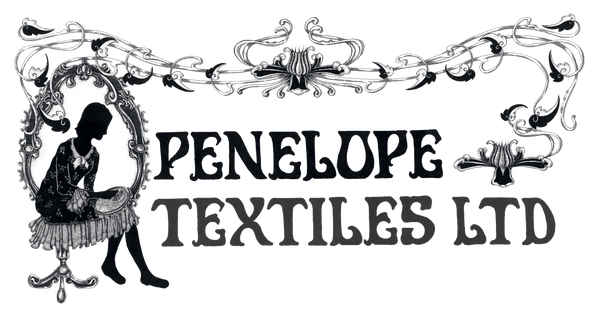Tax included.
Description and Details
A beautiful Sajou cross stitch chart showing scenes of the hand painting stage of producing the colours of Toile du Jouy in Jouy-en-Josas.
Due to the limited colours available from the maddering process, the cloth was sent to the print facrory for the application of greens, yellows and blues. The colours were hand painted by ladies known as 'Pinceauteuses' (which translates as 'Paintbrush Ladies'), the women used their own hair for making their paintbrushes. In 1793 there were 300 Pinceauteuses at the factory but in 1808 Samual Widmer (an Oberkampf nephew) invented solid green which was obtained by printing a layer of yellow followed by a layer of blue, which set the Pinceauteuses work into decline. The final touch to the fabric was to give a layer of glaze to the fabric. A layer of wax and starch were passed through a heated calender. Some of the pieces were even polished with an agate stone to give sheen and depth to the colours.
From 1780- 1805, over 1000 workers were employed at the factory, this figure rises to 1400 if you include the Chantemerle textile mill in Essonnes which wove the cotton fabrics.
The size of the chart is 161 x 127 points, giving a finished size of 30.8 x 25.2 cm.
The embroidery looks wonderful worked in reds or blues.
This chart is taken from the larger Toile du Jouy chart, which features all of the scenes of production along with swatches of Toile du Jouy fabrics. I also have charts and kits that show each stage of the production of Toile du Jouy.
Some of you will already be collectors of Sajou and be more than aware of this extraordinary French brand. Sajou produce haberdashery items made in France to the highest standards (in some cases even produced on the original old machinery). Perfect for gifts and collectors, and for those of you unable to resist a quality that is seldom found in today's mass produced haberdashery products.
Sajou was created in 1828 by Jaques- Simon Sajou, selling haberdashery for embroidery, tapestry, lace, crochet and weaving. His pattern albums are sought after to this day by collectors worldwide. In 2005 the Sajou brand was purchased and revived by avid collector; Frederique Crestin- Billet. Many of the old designs have been faithfully reproduced and there are some new designs that have been added in the Sajou style.
Materials: A3 Chart in a Decorative Sleeve.








